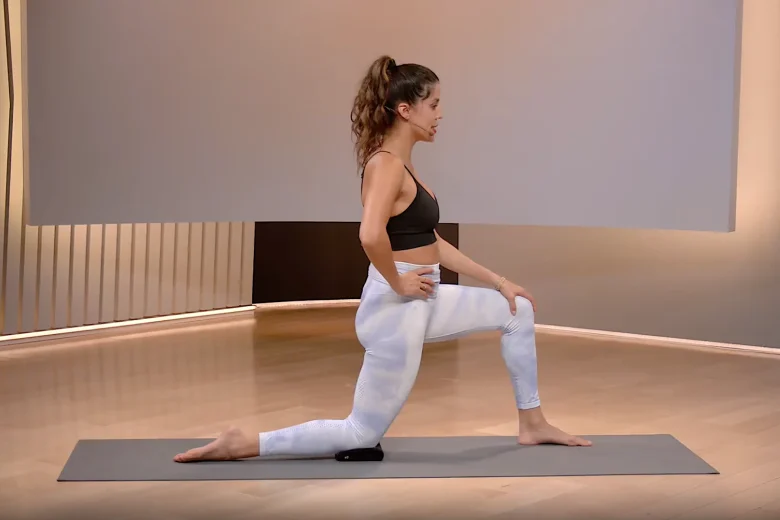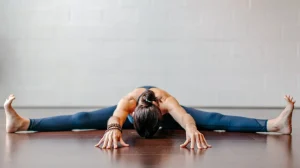Correct posture is crucial for optimal health and preventing pain and injuries. Keeping the spine and joints in the correct position reduces stress on muscles and ligaments, allowing for greater range of motion. Poor posture can lead to long-term back, neck, and shoulder pain. The pain can be caused by prolonged sitting, slouching, or incorrect body movements. Better posture makes you feel more comfortable and increases your confidence, energy, and overall health. Targeted exercises can strengthen the muscles that support the spine, allowing you to maintain proper alignment during daily activities.
Strengthening Core Muscles for Spinal Support
Strong core muscles are essential for maintaining optimal balance and relieving pain. Core muscles, such as the abdominals, obliques, and lumbar spine, provide crucial support to the spine and hips. Planks, bridges, and gentle rotations are effective ways to strengthen these muscles. This process improves stability and reduces back strain. Strong core muscles help you maintain balance and upright posture, whether you’re playing sports or performing daily activities like sitting, standing, or moving objects.
Stretching Tight Muscles to Improve Alignment
Tight muscles can cause misalignment, leading to poor posture and pain. Stretching helps lengthen and relax muscles and restore their flexibility. The chest, shoulders, hip flexors, and legs are common areas that feel comfortable after stretching. Light stretches, such as chest openers, shoulder circles, and leg extensions, can help the body recover from prolonged slouching and sitting. Stretching helps maintain excellent balance and posture by relaxing these areas.
Strengthening Upper Back and Shoulder Muscles
People with rounded shoulders and a forward head often have weak upper back and shoulder muscles. Targeted exercises, such as rowing, reverse flyes, and shoulder blade squeezes, can strengthen these muscles, helping you maintain an upright posture. Strengthening your upper back and shoulder muscles can prevent a hunched posture, and reduce pressure on your neck and upper back. Regularly performing these exercises can improve your posture and relieve pain caused by muscle problems.
Correcting a Lower Back Imbalance
Many people experience lower back pain due to poor posture and muscle problems. Combining lower back strengthening exercises with gentle stretching can relieve pain and improve spinal stability. Exercises like pelvic tilts, cat-cow stretches, and lower back stretches can strengthen the muscles that support your lower back. Strengthening these muscles improves body stability and reduces the risk of injury. This helps you maintain your balance while sitting or during physical activity.
Developing Good Posture
Exercise alone isn’t enough to correct poor posture and relieve pain; your daily habits are also crucial. Maintaining excellent posture while sitting, standing, and walking makes for a more focused workout. Simple changes, such as relaxing your shoulders, strengthening your core muscles, and avoiding prolonged slouching, can help keep your spine healthy. Incorporating short periods of activity throughout the day helps prevent stiffness and keeps muscles active, leading to long-term posture improvements, especially for people with jobs that don’t require much physical activity.
Effective Exercises Without Equipment
Many posture-focused exercises require virtually no equipment and can be easily performed at home. Adding support or resistance, such as using resistance bands, yoga blocks, or exercise balls, can improve the effectiveness of your workouts. Bodyweight exercises like planks, bridges, and stretches are excellent for strengthening and stretching the muscles that maintain good posture. People can improve their posture and relieve pain without going to the gym because these exercises are simple and straightforward to do and require virtually no equipment.
Mindfulness and Body Awareness in Posture Correction
To maintain good posture, practising focus and body awareness is crucial. Paying attention to your posture during daily activities and exercises helps prevent recurrence of bad habits. Slow, controlled movements, along with consciously engaging the core and back muscles, are effective ways to maintain proper posture. People can also use mindfulness to pinpoint stress points or imbalances that require correction, enabling them to make postural adjustments before injuries arise.
Consistency and Long-Term Benefits
To improve balance and relieve pain, consistency is essential. Combining mindfulness with regular strengthening and stretching exercises can gradually reshape muscles, leading to better body coordination. People will gradually experience less pain, increased flexibility, and stronger supporting muscles. Consistent practice ensures these benefits are permanent, making daily activities easier and more comfortable while improving the health of the spine as a whole.
Conclusion
To achieve a healthy and efficient body, it’s essential to do exercises that improve posture and relieve pain. Strengthening your core, upper back, and shoulders, stretching tight areas, and developing good posture can help relieve pain and prevent injuries. Significant and lasting improvements can be achieved by using minimal equipment and practising diligently and consistently. Prioritising posture-improving exercises can effectively improve your long-term physical health and overall well-being. These exercises help reduce pain, improve mobility, and increase confidence in daily activities.
FAQs
1. Which activities help improve posture?
To improve your balance, you can try planks, bridges, rowing, reverse flyes, shoulder blade exercises, and stretches for your chest, shoulders, and hamstrings.
2. How often should I do posture-correcting exercises?
For best results, it’s recommended to exercise three to five times a week, along with some short stretches daily.
3. Does improving your balance help relieve back and neck pain?
Yes, strengthening the muscles that support the spine and relaxing tense areas can help relieve pain and stabilise the spine.
4. Do I need any equipment to stand up straighter?
No, resistance bands, yoga blocks, or exercise balls can enhance the workout, but most effective exercises can be done without equipment.
5. How long will it take for my posture to improve?
After several weeks to two months of consistent practice, you should see improvements in your posture and less pain.
6. Can you do these exercises at home?
Absolutely. You can do most exercises that improve your posture and relieve pain without going to the gym.




